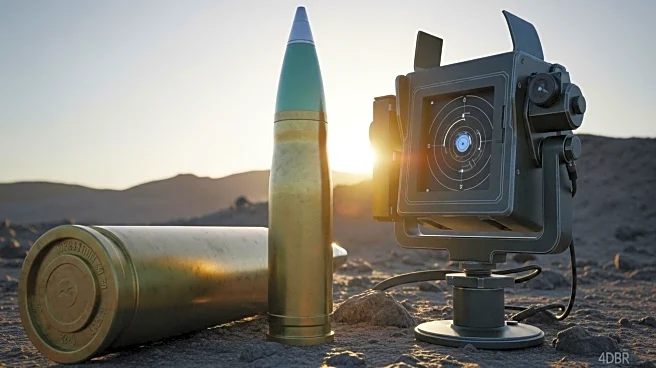What's Happening?
General Atomics Electromagnetic Systems has successfully tested its Long Range Maneuvering Projectile (LRMP) at the U.S. Army Yuma Proving Ground in Arizona. The LRMP, fired from an M777 howitzer platform,
is designed to extend the range and precision of 155mm artillery systems. This next-generation munition can hit targets from 120 kilometers away, even in GPS-denied environments. The winged, precision-guided artillery round is highly maneuverable and capable of conducting controlled descents to strike both static and moving targets. Scott Forney, president of General Atomics Electromagnetic Systems, emphasized the importance of affordable, mass-produced artillery in the face of rising threats from near-peer adversaries and contested environments. The LRMP can be integrated across all existing artillery platforms used by the U.S. military, and the U.S. Navy has awarded a contract to further develop the LRMP for maritime use.
Why It's Important?
The successful test of the LRMP represents a significant advancement in military technology, offering enhanced capabilities for the U.S. military in terms of range and precision. As global military dynamics evolve, the ability to strike targets accurately from long distances in challenging environments becomes increasingly crucial. This development could bolster the U.S. military's strategic advantage, particularly in scenarios where traditional GPS systems are compromised. The integration of LRMP across existing platforms ensures that the military can upgrade its artillery systems without extensive overhauls, potentially saving costs and time. Furthermore, the contract with the U.S. Navy indicates a broader application of this technology, enhancing maritime defense capabilities.
What's Next?
General Atomics will continue to develop the LRMP for maritime use, as indicated by the contract with the U.S. Navy. This could lead to further tests and eventual deployment in naval operations, expanding the scope of the LRMP's application. The U.S. military may also explore additional integration opportunities across different branches to maximize the utility of this technology. As the LRMP proves its effectiveness, other defense contractors might accelerate their efforts to develop similar technologies, potentially leading to a competitive landscape in precision artillery systems.
Beyond the Headlines
The development of the LRMP highlights the ongoing shift towards precision and adaptability in military technology. This trend reflects broader strategic priorities, focusing on minimizing collateral damage and enhancing operational efficiency. The ability to operate in GPS-denied environments also underscores the importance of developing technologies that can function independently of traditional navigation systems, a critical factor in modern warfare. As these technologies evolve, ethical considerations regarding their use and potential impact on global military balance may arise.











